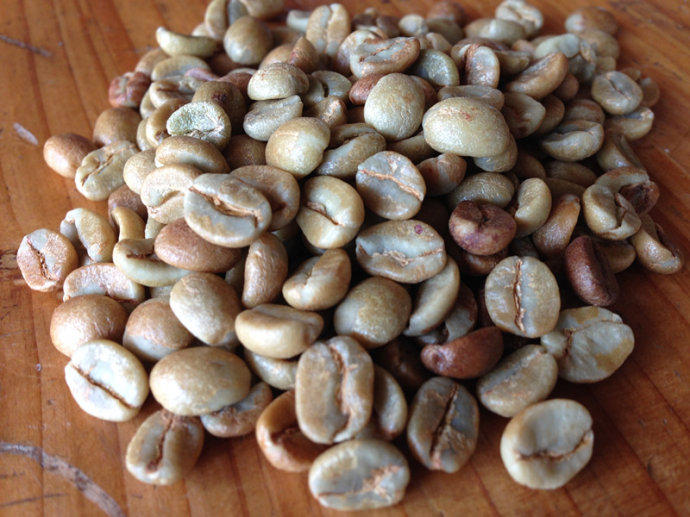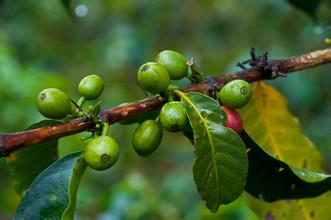World boutique Coffee Manor: KEFFA region of Ethiopia-an introduction to the birthplace of coffee
The birthplace of KEFFA- coffee in Ethiopia
Ethiopia in East Africa means "land inhabited by people tanned by the sun" in ancient Greek. Ethiopia's unique cultural tradition, spectacular scenery, pleasant climate, rich animal and plant resources, important places of interest, hospitality and friendly people make it one of the major tourist destinations in Africa. Ethiopia grows coffee in different climatic zones, so it has more than 140 farms and fresh coffee is produced all the year round. The quality of Ethiopian coffee varies according to different elevations and regional ecological environment. The Harar coffee in the southeast highland is a typical Muha coffee with strong aroma; the coffee produced in southwest Wollega has a rich fruity flavor; Limu coffee with wine
Fragrant and spicy; Sidamo coffee is mild, full-bodied and sour, while Yirgacheffee coffee is floral. Taste Yega Xuefei, chocolate and sour taste more intense, like lemon flying, with a trance of flowers.
95% of the large coffee production is done by small shareholders, with an average output of 561 kg per hectare. For centuries, minority holders of Ethiopian coffee farms have been producing a variety of high-quality types of coffee. The secret to producing high-quality coffee is that coffee growers have developed a coffee culture in a suitable environment through generations of repeated learning about the coffee growing process, which mainly includes farming methods using natural fertilizers, picking the reddest and fully ripe fruits and processing the fruits in a clean environment. The differences in the quality, natural characteristics and types of Ethiopian coffee all stem from differences in "altitude", "region", "location" and even land types. Ethiopian coffee beans are unique due to their natural characteristics, including "size", "shape", "acidity", "quality", "flavor" and "flavor". These characteristics give Ethiopian coffee a unique natural quality. usually, Ethiopia is always used as a "coffee supermarket" for customers to choose the kind of coffee they like.
Ethiopia produces between 200000 and 250000 tons of coffee each year. Today, Ethiopia has become one of the largest coffee producers in the world, ranking 14th in the world and fourth in Africa. Interestingly, Ethiopians also put pictures of horses on the coffee package to show the purity of the coffee. It is said that horses are the main means of transportation there.
Ethiopians were proud of having the best Arab thoroughbred horses in the world in the 1900's, and now they give this pride to Ethiopian coffee, "quality coffee should be as pure as thoroughbred horses". Because of this concept, the taste of coffee here is still so mellow.
Source:
Gieson's own baked blog
Important Notice :
前街咖啡 FrontStreet Coffee has moved to new addredd:
FrontStreet Coffee Address: 315,Donghua East Road,GuangZhou
Tel:020 38364473
- Prev

Boutique Coffee Manor in the World: an introduction to the Black Soul Coffee beans in Laslajas, Costa Rica
Finca Las Lajas Alma Negra reprint 2015-07-02 13:10:42 label: Costa Rican coffee bean boutique coffee bean Costa Rican black soul La La Haas black soul Finca Las Lajas, Alma Negra taste clear: "there is an opportunity to treat it with a high standard of daily life." A touch of fruit produces fermented aroma.
- Next

Boutique Coffee Manor in the World: introduction to Papua New Guinea Papua New Guinea
In Papua New Guinea, about 75 per cent of coffee products come from small local farmers
Related
- Does Rose Summer choose Blue, Green or Red? Detailed explanation of Rose Summer Coffee plots and Classification in Panamanian Jade Manor
- What is the difference between the origin, producing area, processing plant, cooperative and manor of coffee beans?
- How fine does the espresso powder fit? how to grind the espresso?
- Sca coffee roasting degree color card coffee roasting degree 8 roasting color values what do you mean?
- The practice of lattes: how to make lattes at home
- Introduction to Indonesian Fine Coffee beans-- Java Coffee producing area of Indonesian Arabica Coffee
- How much will the flavor of light and medium roasted rose summer be expressed? What baking level is rose summer suitable for?
- Introduction to the characteristics of washing, sun-drying or wet-planing coffee commonly used in Mantenin, Indonesia
- Price characteristics of Arabica Coffee Bean Starbucks introduction to Manning Coffee Bean Taste producing area Variety Manor
- What is the authentic Yega flavor? What are the flavor characteristics of the really excellent Yejasuffi coffee beans?

